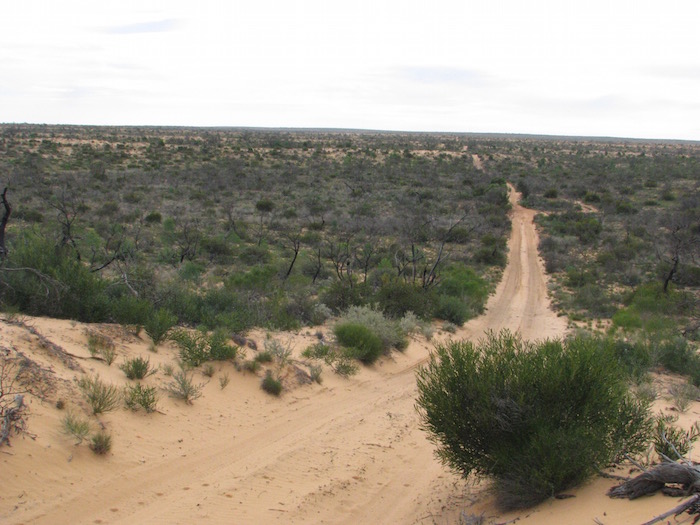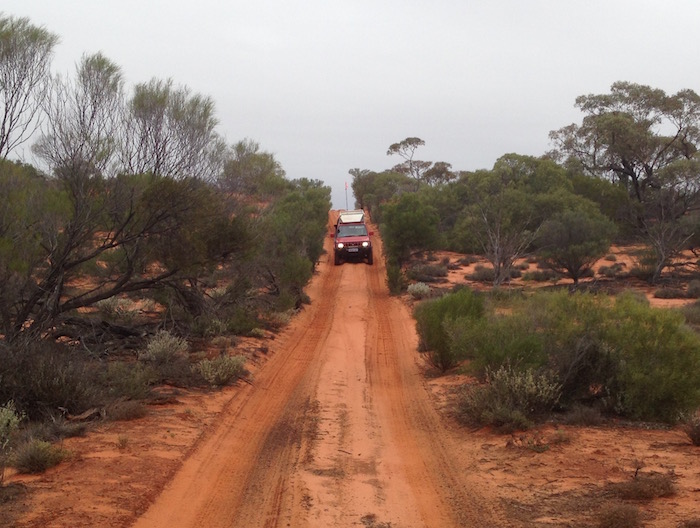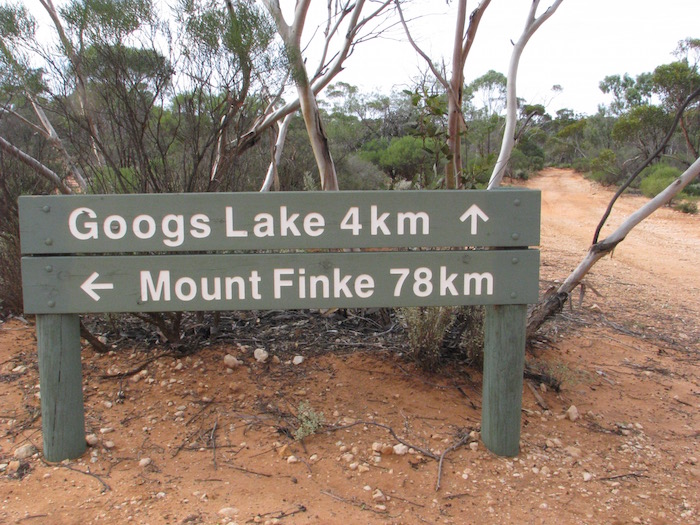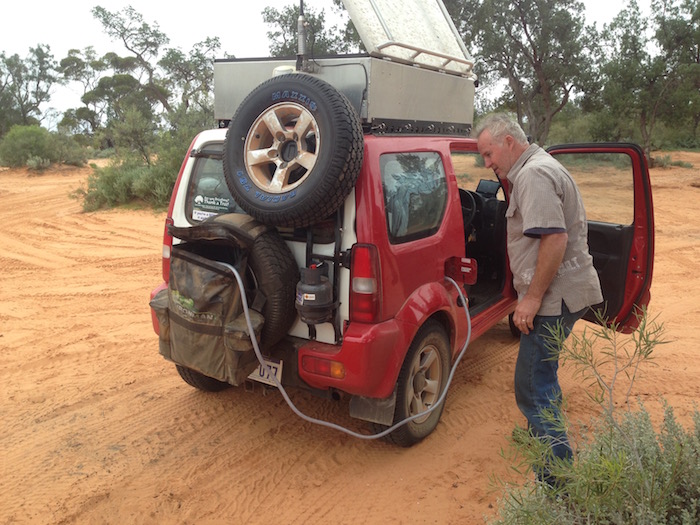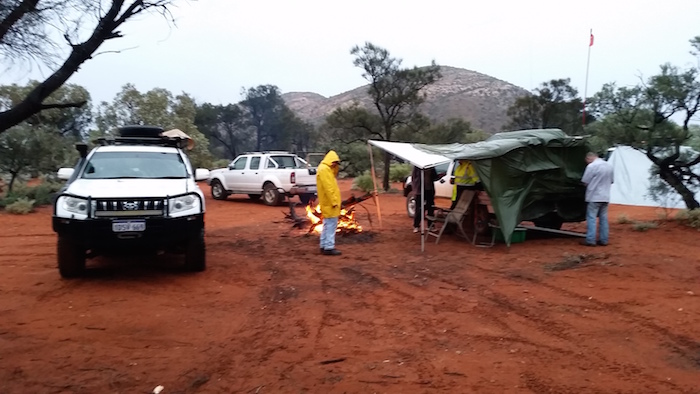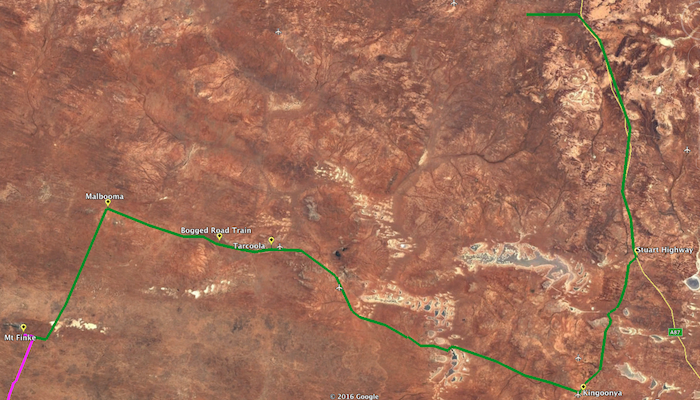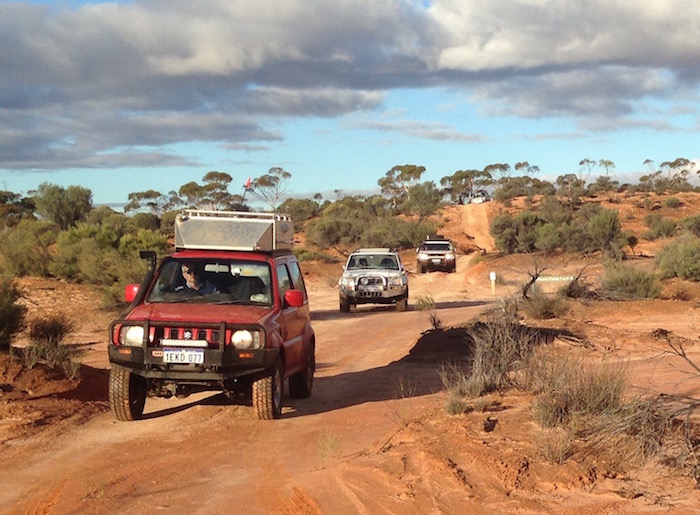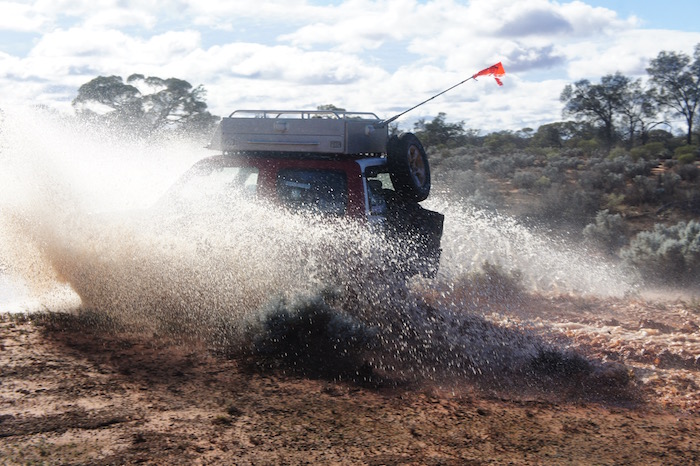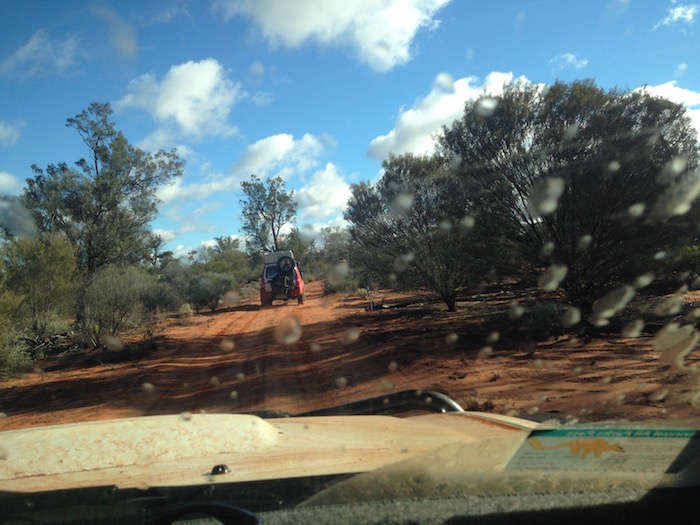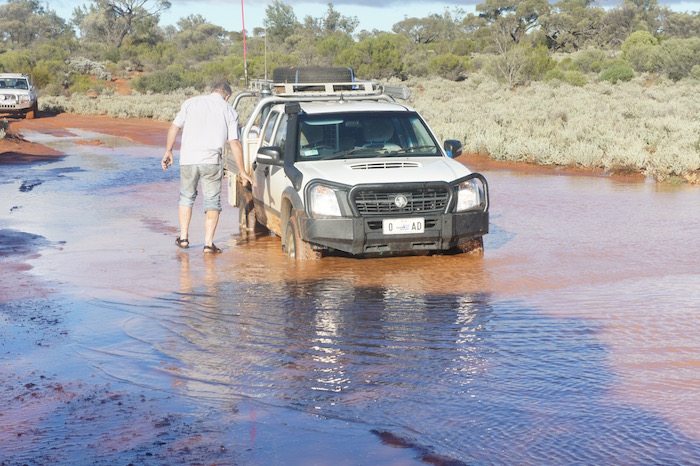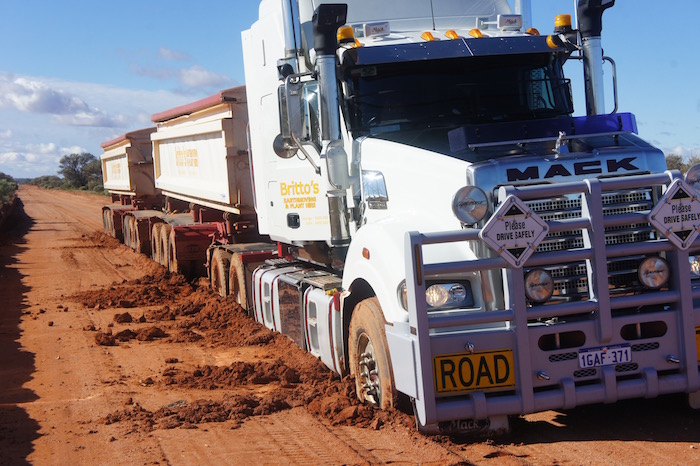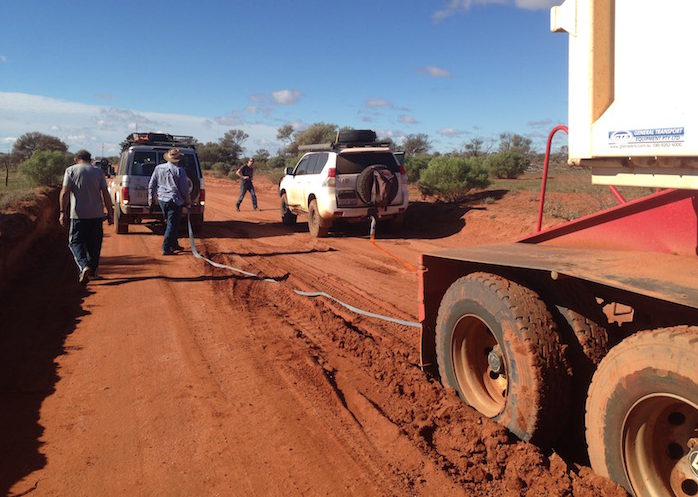Ceduna
Scott departed early for Ceduna to arrange collection/fitting of a tyre for his Jimny.
On arrival at Ceduna the group dispersed to get permits for Googs Track, refuel, and buy food. We regrouped at the oyster shop opposite the BP servo.
- Ceduna Jetty.
To Googs Track
Googs Track crosses more than 300 sand dunes as it traverses 200 kilometres of the Yumbarra Conservation Park and Yellabinna Regional Reserve before it meets the Transcontinental Railway Line access track at Malbooma. It is sometimes compared to a Simpson Desert crossing.
The official advice on trailers on Googs Track is not to take them so John and Ken continued on to Wirulla via the Eyre Highway. From there they would take the track past Lake Gairdner to Kingoonya.
Kerry, Dan, Scott and I returned west, then turned right off Eyre Highway onto Kalanbi Road and headed to Googs Track.
There is a gate at the start of the Track, informational signage and a small clearing where one can deflate tyres.
- Gate at the start of Googs Track.
South to North or North to South?
Although the recommended direction to traverse the track is from south to north we meet three groups heading south. Advice on sign boards at the start of the track is to use UHF18 and we called continuously – particularly approaching the crest of dunes. Ultimately it was fairly straightforward to locate oncoming traffic and none of the ‘meetings’ presented a hazard.
- Kerry’s Navara, Dan’s Prado and Steve’s Landcruiser.
- Googs Track.
- Through the windscreen of Steve’s ‘Cruiser.
- Top of a dune.
- Crest of a dune.
- Scott’s Jimny.
- Steve’s Landcruiser.
- Kerry’s Navara.
- Googs Lake, four kilometres off the track, has picnic facilities and is well worth the detour.
Weather Alert
While heading north I heard the weather forecast. There was a very high possibility that we would get some serious rain. We diverted into Googs Lake for lunch.
While there we met Steve Sporne from Scone in NSW, travelling by himself in a Toyota Landcruiser V8 Wagon. After I advised him of the impending weather he decided to abandon his idea of camping at the lake and joined our convoy.
- Lake Goog.
- Lake Goog.
- Lunch spot.
- Lake Goog
- Scott refuelling.
The approaching front was evident. The sky greyed over. Light rain started falling.
- Lake Goog with water two weeks later.
Heading North
Not long after we got back onto the main track after lunch we stopped and chatted with four blokes from NSW in two vehicles heading south. They had experienced light rain, nothing to worry about. Shortly after that we met Pat Hall from Melville, WA driving a white Toyota Prado and he told us the rain was fairly heavy. I caught up with him after the trip.
- Gutter on Googs Track.
Mount Finke
The rain intensified and by the time we turned into Mount Finke to camp for the night it was gloomy and fairly bucketing down.
What could have been a miserable night was sorted out pretty well. I parked my Rodeo at 90 degrees to Dan’s Prado and we extended both awnings. Hoochies were judiciously placed and the final touch was the placement of an umbrella in the V of the two vehicles.
- Camp at Mount Finke.
The campsite was picked clean of firewood. Before dark fell we searched as far out as 300 metres for firewood, eventually getting enough for the night – none of it particularly good and all of it sodden. Being good bushmen we used petrol and diesel to start the fire.
- MOUNT FINKE TO BULGANNIA.
Clear Skies
Morning broke with clear skies and we set about ‘recovering’ the situation. There had been a lot of rain overnight and from containers left out we estimated a minimum of 60 mm had fallen but it could easily have been well more than that.
- Rain had cleared.
- Mount Finke from the campground.
- Scott and Steve.
- Mount Finke campground.
- Mount Finke in the morning.
As a consequence of the previous night’s efforts to keep out the rain it took a little longer to get going in the morning. When we finally got out onto the Track we found that there was water everywhere. Playground for 4WDs.
Mount Finke is an inselberg or monadnock which is an isolated hill or small mountain that rises abruptly from a surrounding plain (literally ‘island mountain’). Presumably Mount Finke’s name is derived from the same as that for the Finke River.
- Mount Finke.
North to the Railway
Most of the mudholes were fairly innocuous and we drove through them without prior inspection.
- Saltpan on Googs Track.
- Convoy coming into saltpan.
- Steve’s Cruiser at saltpan.
- Another puddle.
- Scott splashes through.
- The Track can get wet.
- Kim and Rodeo.
- Cruiser on the Track.
- Kerry and Kim.
- Kerry and his Nissan Navara.
- Scott sends up spray.
- Through windscreen.
- Dan and his Prado spray water everywhere.
- Scott and his Jimny.
- Common view.
Stuck
Close to end of the Track we encountered a stretch of water about 120 metres long. I assessed that it was not overly deep, looked similar to all previous stretches of water, and presented no particular challenge. Not so. Very slippery mud.
- Shallow but slippery.
- Dan directing operations.
- Hooked up.
- Snatched out.
Kerry also got stuck at the beginning of the stretch of water. Steve snatched him out.
Trans Line
The appearance of the Trans Australia Railway signalled the end (or beginning) of Googs Track. Much hyped but a bit of a doddle really. If the uneducated could be persuaded to lower tyre pressures the offset ‘holes/ruts’ (sometimes referred to as moguls) on the approach to sand dunes would be eliminated and one could confidently complete the Track in a 2WD – although that, of course, would exacerbate the problem of holes, ruts and corrugations of which I am complaining. Any halfway competent driver with adequate vision and a vehicle with a 4WD button/stick could drive this track with ease.
- At the Trans Line.
- Crossing the Trans Line.
- End of Googs Track.
- To Tarcoola.
You Won’t Believe This
Twenty minutes along the railway access track I saw headlights. Not moving.
A double road train with 47 tonne of railway ballast – to take out two hundred kilometres further west – was going nowhere.
- Double road train with 47 tonne of ballast.
After photographs and a bit of discussion Dan and Steve said they would have a go at snatching the truck out backwards.
- Bogged.
- Double road train going nowhere.
Snatch straps out, handheld radios out, start your engines and engage gears. Out it popped. No-one was more surprised than the truck driver.
- Preparing to snatch.
- Hooked up to snatch the road train out backwards.
Dan and Steve will be ‘dining out’ on that exploit for years.
© Kim Epton 2016-2024
1152 words, 54 photographs, one image.
Feel free to use any part of this document but please do the right thing and give attribution to adventures.net.au. It will enhance the SEO of your website/blog and Adventures.
See Terms of Use.




